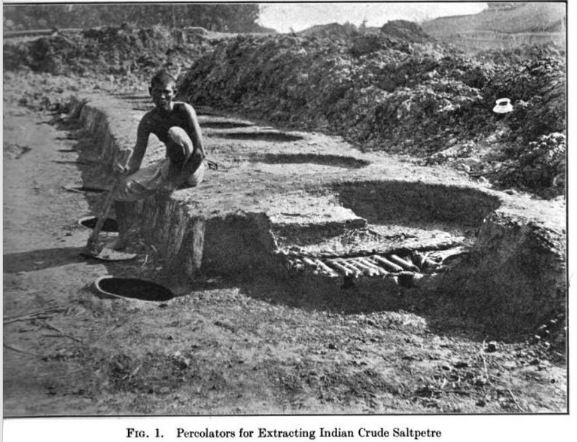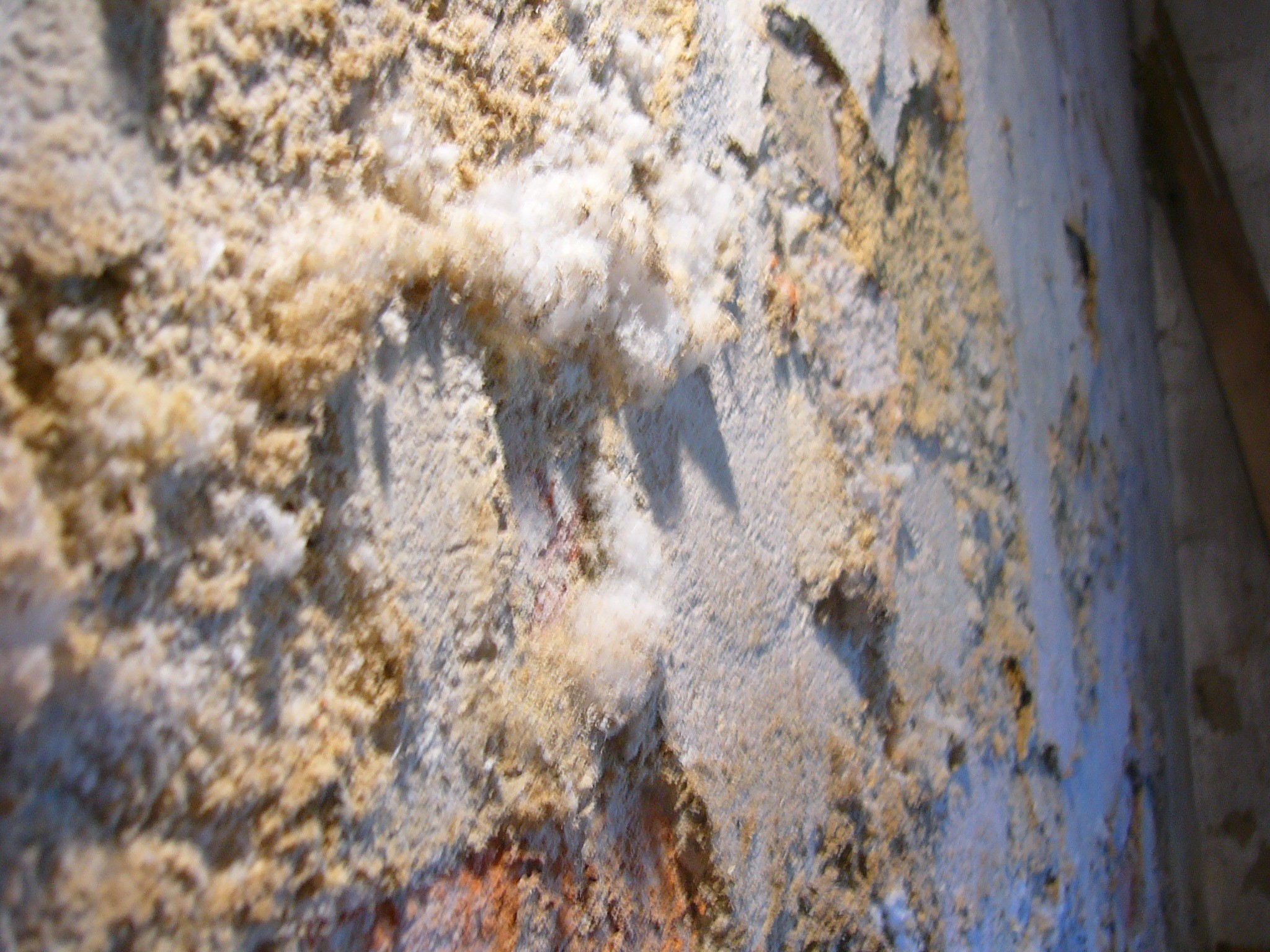मिथिलाक प्राचीन संस्कृति, परम्परा आ इतिहास पर विचार करबाक कालमे हमरालोकनिकें एकर पुरान प्राकृतिक स्वरूप कें ध्यान राखए पड़त। आ एही क्रममे हमरालोकनि एकटा प्रमुख घटकक रूपमे नोनी कें पबैत छी।
आइ जखनि मिथिलामे पानिक मात्रा घटि रहल अछि आ मिथिलामे दिन-दिन नमी घटि रहल अछि तँ वर्तमान परिवेशमे रहनिहार एहन स्थितिक अनुमानो नै कए सकैत छथि जे भदबारि आ जाड़ मासमे घरक दिवार पर नोनीक गोला ततेक लागि जाइत छलैक जे ओ नीचाँ दिस लटकि जाइत छल आ दिवार कें खा जाइत छल। जे ईंटा काँच रहि जाइत छलैक ओ एहि नोनीक चपेटमे पड़ि समाप्त भए जाइत छल।
ई एकटा एहन घटना थीक जकर आलोकमे हमरालोकनिक मिथिलाक पुरातत्त्व कें सेहो देखि सकैत छी। एहि प्राकृतिक घटनासँ मिथिलाक कतेक गढ समाप्त भए गेल होएत तकर अनुमान लगाओल जा सकैत अछि। तें जँ आइ मिथिलामे अधिक मात्रामे पुरातात्त्विक नै भेटैत अछि तँ एकरा एहि बातक संकेत नै मानल जा सकैत अछि जे एतए कोनो प्राचीन गढ ईंटाक नै छल।
19म शतीमे मिथिलामे एहि नोनीक व्यावसायिक उपयोग ईस्ट इंडिया कम्पनीक द्वारा कएल गेल। एकटा रिपोर्टमे कहल गेल अछि जे तिरहुत नोनी अर्थात् saltpeter अर्थात् potassium nitrate, KNO3 क व्यापारक प्रमुख केन्द्र छल।
जुलाई 1831 ई.मे प्रकाशित THE AMERICAN JOURNAL OF SCIENCE AND ARTS, अंक 20, मे ओकर सम्पादक बेंजामिन सिलिमैन एकटा रिपोर्ट प्रकाशित केने छथि जे टाइटलर नामक एक अधिकारीक द्वारा ओहि समयमे लिखल गेल छल, जहिया ओ मूल्ली नामक स्थान पर रहैत रहथि। ई मूल्ली चम्पारण सँ उत्तर अछि। टाइटलर लिखैत छथि जे ई स्थान गण्डक आ बागमती नदीसँ घेराएल अछि। एही ठाम रहैत टाइटलर लिखैत छथि जे तिरहुतमे नाइट्रस के उत्पादनक लेल नीक जलवायु अछि। ई तिरहुत भारतक प्रमुख जिलामेसँ एक अछि जतए साल्टपीटर अथवा नोनी के नीक उत्पादन होइत अछि। एतए भदबारि आ जाड़ मास में समसल दिवाल पर नीचाँ दिस खूब पैघ लटकल नोनीक गोला जमि जाइत अछि। एहन समसल स्थान सभ पर जँ ब्रशसँ रगड़ल जाए तँ दूसँ तीन दिन पर भरि पथिया नोनी निकालल जा सकैत अछि। टाइटलर लिखैत छथि जे ओ जाहि घरमे रहैत छथि ओकर अधपक्कू ईंटामे ततबा नोनी लागि गलैक जे हुनका फेरसँ नब दिवाल देमए पड़लनि।
एतेक अधिक मात्रामे पोटाशियम नाइट्रेटक संग्रह आ उत्पादन सँ जुडल व्यापारी नोनियाँ कहबैत छल। जा धरि ब्रिटिश कालमे एहि नोनीक उत्पादन होइत रहल ता धरि स्वाभाविक रूपसँ नोनियाँ जातिक सामाजिक-आर्थिक स्थिति नीक रहलैक। एहि नोनीक स्थानीय उपयोग कपडाक सफाईमे होइत छल आ अंतरराष्ट्रीय स्तर पर रसायन-उद्योग आ खाद बनएबामे होइत छल। मुदा प्रमुख रूपसँ एकर उपयोग बंदूकक लेल पाउडरक (Gun power) रूपमे होइत छल।
एहि नोनीक उत्पादन आ ओकर प्रयोग मिथिलाक समाज आ ओकर संस्कृति के कोन रूपमे प्रभावित करैत छल से एकटा शोधक विषय थीक।
ई सम्पूर्ण आलेख एतए अग्रिम शोधक लेल देल जा रहल अछि।

5 Nitrous Atmosphere of Tirhoot
Tirhoot is one of the principal districts in India for the manufacture of saltpeter the soil is everywhere abundantly impregnated with this substance and it floats in the atmosphere in such quantities that during the rains and cold weather it is attracted from thence by the lime on the damp walls of houses and fixes there in the shape of long downy crystals of exceeding delicacy.
From damp spots it may be brushed off every two or three days almost in basketsful In consequence of all this the ground even in hot weather is so damp that it is extremely difficult either to get earth of sufficient tenacity to make bricks the country being quite destitute of stones or when made to find a spot sufficiently solid to sustain the weight of a house. Even with the greatest care the ground at last yields and the saltpetre corrodes the best of the bricks to such a degree that the whole house gradually sinks several inches below its original level. Houses built of inferior materials of course suffer much more one of which the inner foundations were of unburnt bricks absolutely fell down.
Whilst I was at Mullye and the family in it escaped almost by miracle. My own house which was not much better sunk so much and the walls were at bottom so evidently giving way that I was compelled with extreme expense and inconvenience to pull down the whole inner walls and build them afresh in a more secure manner.
From the same cause a new magazine which government directed to be built with an arched roof of brickwork was when complete, found so very unsafe that it was necessary to demolish it entirely and rebuild it on a new plan with a roof of tiles.
In such a soil it will easily be concluded that swamps and lagoons prevail very much of course mostly during the rains and till the sun gathers power in the hot weather and in fact what has been above so much insisted on as to the two contrary aspects of the country with respect to vegetation may by a conversion of terms be equally applied to the water on its surface.
In the cold and dry weather it is comparatively scanty in the rains it is superabundant and as the rivers in this district are frequently found to change their situations, so through a long course of time it has resulted that hollow beds being deserted by their streams become transformed into what during the rains assume the appearance of extensive lakes, but in dry weather degenerate into mere muddy swamps overgrown with a profusion of rank aquatic vegetations particularly the gigantic leaves of the Lotus and swarming with every tribe of loathsome cold blooded animals.
Some of these lakes during the height of the rains communicate with their original streams and thus undergo a temporary purification but others receive no fresh supply except from the clouds and of course their condition is by much the worse.
Some of the conversions of a river bed into a lake have occurred in the memory of the present inhabitants or at least within one descent from their ancestors.
Tytler on the Climate of Mullye, in Trans Med & Phys Soc of Calcutta vol iv
मूल रूपसँ ई आलेख Transactions of the Medical and Physical Society of Calcutta, Vol IV मे 1828 ई. मे प्रकाशित अछि।
